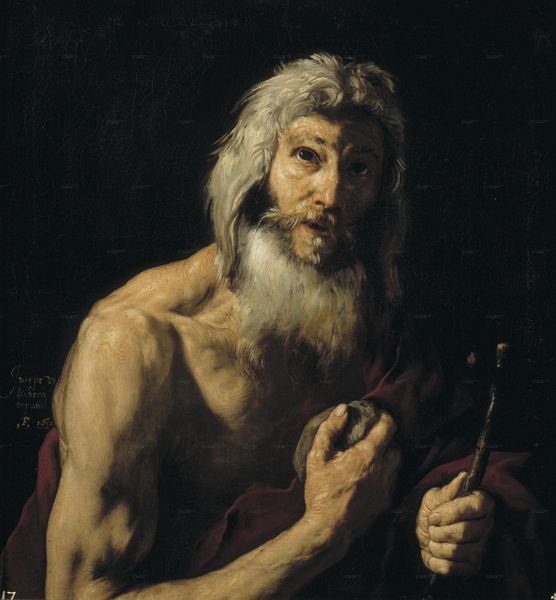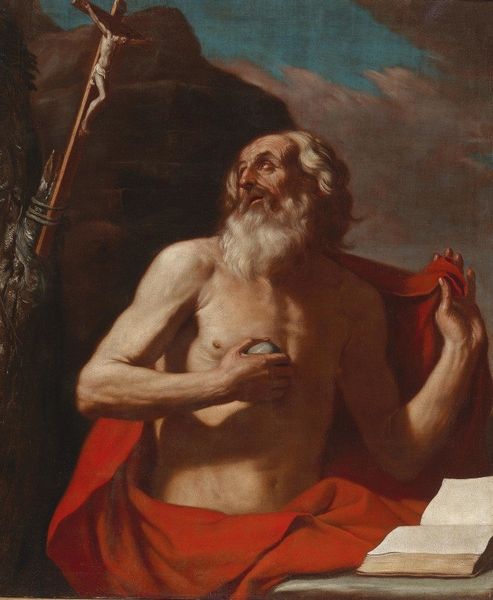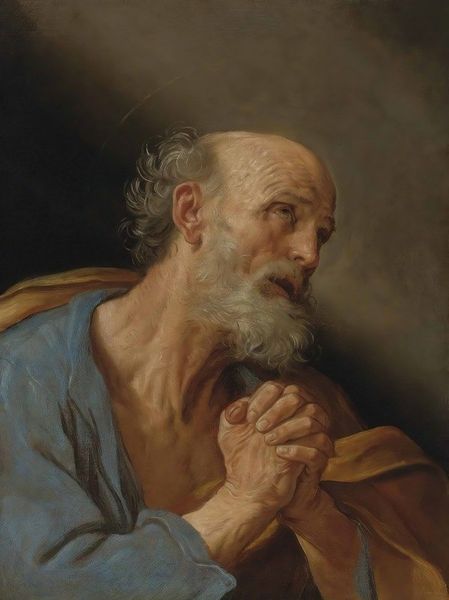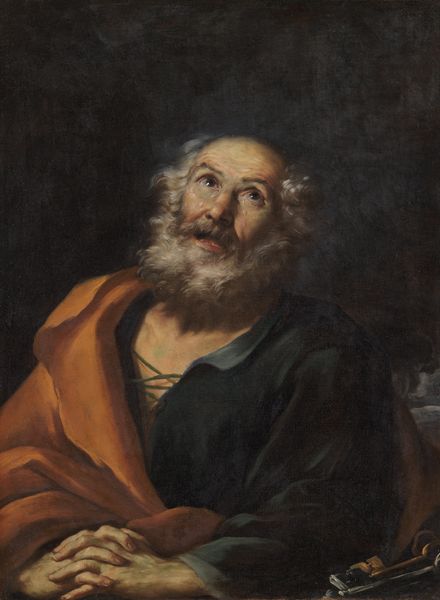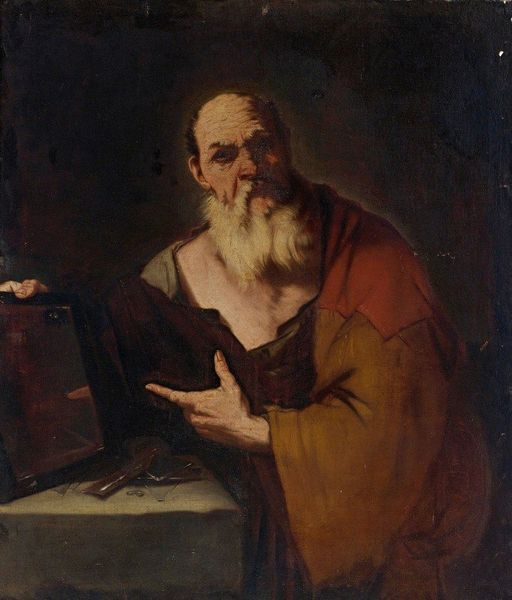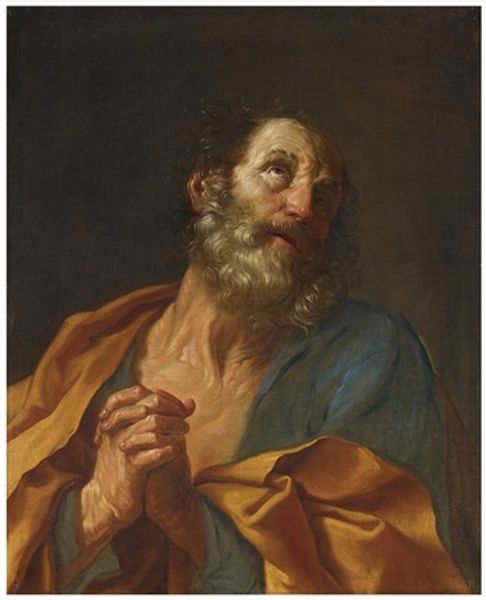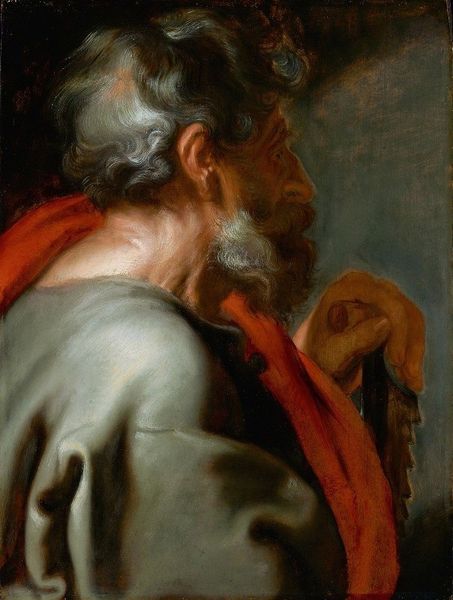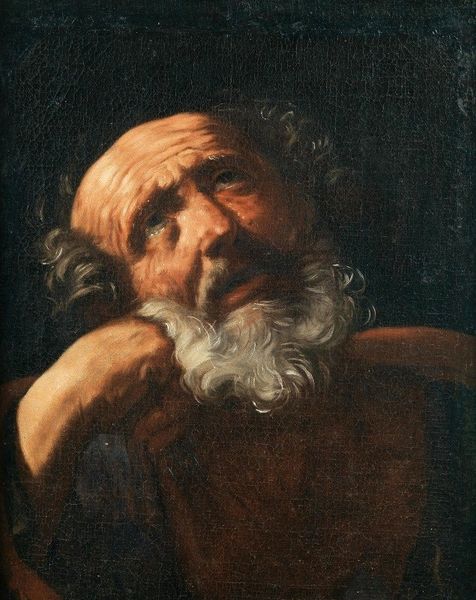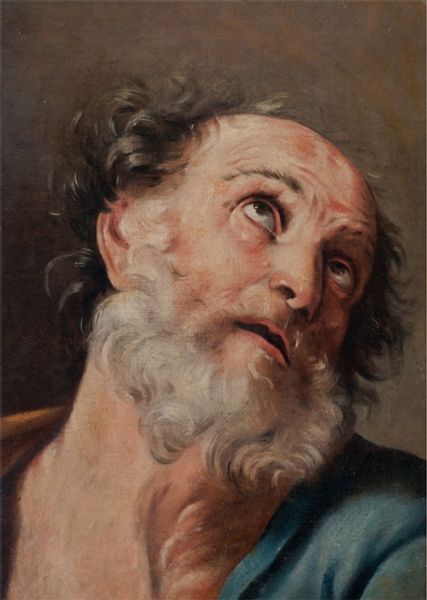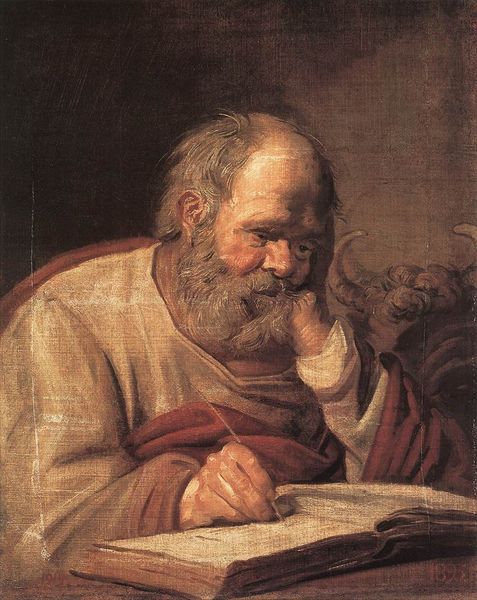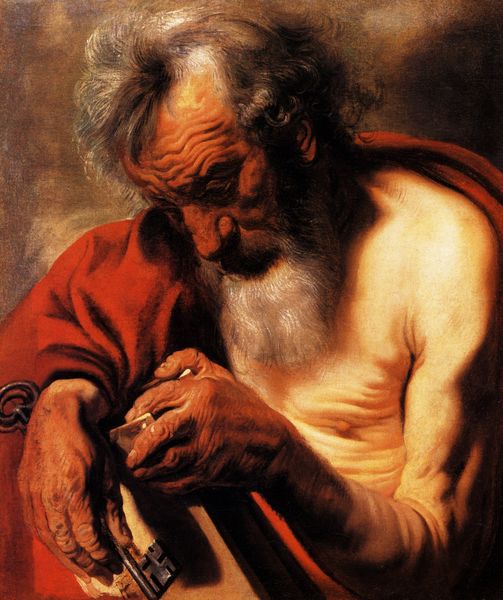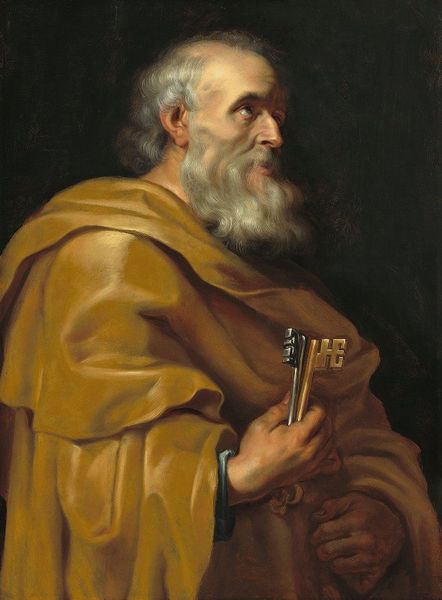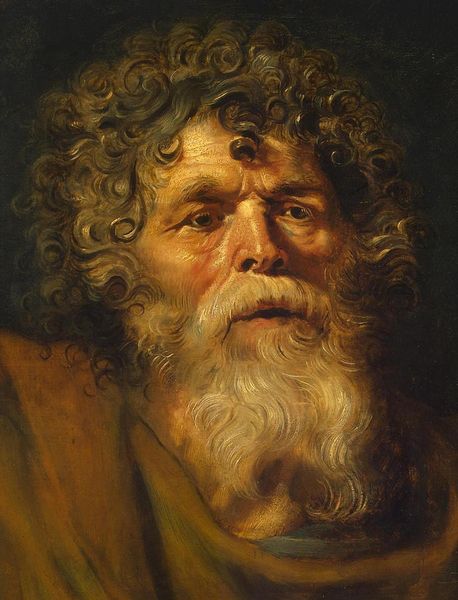
oil-paint
#
portrait
#
baroque
#
oil-paint
#
chiaroscuro
#
history-painting
Copyright: Public Domain: Artvee
Editor: This is Guido Reni's "Saint Jerome," painted sometime between 1590 and 1620 using oil paint. I find the image really striking – the contrast between light and shadow creates such a strong sense of drama. What sort of imagery stands out to you in this piece? Curator: Well, Jerome himself is laden with iconography. The skull, often present in other depictions, speaks to mortality. Here, though absent, the cross, held almost as a walking stick, it tells us more. How would you say it’s being used symbolically here, beyond just his faith? Editor: I hadn’t really considered it beyond that. Maybe…as a support? He does look rather weary. Curator: Exactly! And that’s where the emotional weight comes in. Jerome was a scholar, known for translating the Bible into Latin. So what does it mean when someone renowned for interpreting scripture, who's lived a long life of devotion, then turns to lean upon the Cross itself? Editor: Is it doubt, maybe? Like he needs more than just faith alone at that moment? Curator: Possibly. Or a profound acceptance. Consider how frequently artists repeat certain symbols - the Cross, the Lamb - generation after generation. But each time, depending on the moment they’re made in, they’re imbued with different, sometimes even contradictory meanings. The image of Jerome as an icon becomes deeply personal and reflective. What do you think? Editor: That’s fascinating! I’ll never look at religious paintings quite the same way again, now I see the complexity of symbols being altered over time. Curator: Indeed, the cumulative effect of history imbues everything with its weight.
Comments
No comments
Be the first to comment and join the conversation on the ultimate creative platform.
